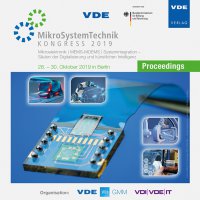Modelling and Simulations of Electrodes for Electrical Impedance Spectroscopy of 3D Cell Culture in a Microfluidic Bioreactor
Konferenz: MikroSystemTechnik 2019 - Kongress
28.10.2019 - 30.10.2019 in Berlin, Deutschland
Tagungsband: MikroSystemTechnik 2019
Seiten: 4Sprache: EnglischTyp: PDF
Persönliche VDE-Mitglieder erhalten auf diesen Artikel 10% Rabatt
Autoren:
Venegas-Rojas, Deybith (Institut für Mikrosystemtechnik, Eißendorfer Straße 42, 21073 Hamburg, Germany & Instituto Tecnológico de Costa Rica, Costa Rica)
Scheel, Jan-Philipp; Trieu, Hoc Khiem (Institut für Mikrosystemtechnik, Eißendorfer Straße 42, 21073 Hamburg, Germany)
Inhalt:
It has been proved in literature that electrical impedance spectroscopy (EIS) is an accepted label-free, non-invasive analytical tool for cells, and also that 3D cell culture in microfluidic devices can have the ability to model more accurately the in-vivo condition with more control, so it is desirable to optimize the electrodes for these circumstances. The aim of the study is to analyze and optimize the electrodes design for 3D cell culture in a microfluidic bioreactor using finite element method (FEM) simulations. Variations in geometry, surrounding fluid, and electrode materials were studied, as well as their characteristic electric field, homogeneity and coverage and the effect of different polystyrene beads as spheroids models. A not common material for electrodes was tested, this is, highly-doped Si (HD-Si), which would facilitate the microfabrication. With the results it was concluded that parallel plate electrodes (PPE) geometry is more suitable for 3D cell culture because of the homogeneity and volume coverage. With the parameters used, the double layer (DL) effect seems to affect more at frequencies below 10 kHz, and above, the properties of the solution seems to dominate over the DL. Platinum appears to be the material with the highest impedance modulus (|Z|) change when the bead size is varied for our model, which could imply a better resolution when the spheroid changes its volume in a real experiment. The parasitic effects will probably decrease the sensitivity in a real experiment and it should be taken into account that real spheroids are more conductive, so the change in |Z| should be lower. The FEM simulations of HD-Sisuggest that it has also sensitivity to variation of beads sizes and could provide a good response, especially for frequencies higher than 10 kHz, so this could be a material to be tested in future experiments.


